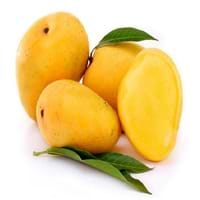Health Benefits
Cancer prevention, Cures gastro-intestinal troubles, Heart care, Muscle pain relief, Prevents blindness from diabetes
Cancer prevention, Cures fatigue, Heart care, Prevents strokes
General Benefits
Boosts immune system, Digestive aid, Fights against infections, Helps in weight loss, Maintains healthy cholesterol level, Strengthens bones
Anti oxidant properties, Boosts immune system, Controls blood pressure, Digestive aid, Improves eye vision, Maintains healthy cholesterol level
Skin Benefits
Anti-aging benefits, Skin rejuvenation
Anti-aging benefits, Brightens and lightens complexion, Skin cleansing, Skin rejuvenation, Treatment of acne, Treatment of blackheads, Treatment of dark spots
Hair Benefits
Promotes longer and healthier hair, Protects hair
Good conditioner, Prevents hair loss, Treatment of dandruff
Allergy Symptoms
Coughing, Diarrhea, Headaches, Hives, Itching, Labored Breathing, Nausea, Runny nose, Swelling of mouth, tongue or lips, Vomiting, Watery eyes
Abdominal pains, Breathing difficulty, Diarrhea, Runny nose, Sneezing, Swelling of mouth, tongue or lips, Watery eyes
Side Effects
May cause abdominal pain, Diarrhoea, Mouth irritation, Throat irritation, Weight gain
Increase in blood sugar level, Diarrhoea, Weight gain
Best Time to Eat
As a snack in the late afternoon, Don't consume at night and before bed, Eat the fresh ones, avoid mixing with any other foods, don't eat after meal., Morning time (before lunch), Strictly avoid empty stomach
Don't consume at night and before bed, Eat the fresh ones, avoid mixing with any other foods, don't eat after meal., Morning time (before lunch)
Vitamin B5 (Pantothenic Acid)
Vitamin C (Ascorbic Acid)
Vitamin K (Phyllochinone)
Calories in Fresh Fruit with Peel
Not Available
Not Available
Calories in Fresh Fruit without Peel
Type
Tree fruit, Tropical
Tree fruit
Season
Spring, Summer
Spring, Summer
Varieties
Emperor fruit, Mauritiu, Sweet Heart, Brewster, Haak Yip and Bengal
Alphonso, Valencia Pride, Badami, Chaunsa, Nam Dok Mai, Glenn, Sindhri, Madame Francique, Kesar and Keitt
Color
Bright red, Pink red
Orange, Red, Yellow
Inside Color
Greyish-white
Yellow
Taste
Crunchy, Juicy, Sweet
Sweet
Origin
China, Indonesia, Philippines, Vietnam
Southern Asia
Soil Type
Alluvial, Loam, Well-drained
Clay, Loam, Sand
Climatic Conditions
Absence of strong wind, Cold, Dry, Without frosts
Humid, Warm to hot climate
Facts about
- The seed of Lychee fruit is toxic & can adversely affect the digestive system.
- This fruit gives a smoky flavor when eaten dried.
- This fruit is a symbol of love and romance in China.
- A mango tree can bear fruits even after the age of 300 years.
- Height of a mango tree can be as high as 100 feet.
- In India, mango is known as a symbol of love. Also, a mango basket is considered as the sign of friendship.
Other Countries
Australia, India, South Africa, Thailand, United States of America
Bangladesh, Brazil, China, Indonesia, Mexico, Nigeria, Pakistan, Philippines, Thailand
Top Importer
Hong Kong
United States of America
Top Exporter
China
Mexico
Botanical Name
Litchi chinensis
Mangifera Indica
Synonym
Nephelium litchi
Not Available
Subkingdom
Tracheobionta
Tracheobionta
Division
Magnoliophyta
Magnoliophyta
Class
Magnoliopsida
Magnoliopsida
Order
Sapindales
Sapindales
Family
Sapindaceae
Anacardiaceae
Species
L. chinensis
M. indica
Generic Group
Soapberry
Cashew
Difference Between Lychee and Mango
We might think that Lychee and Mango are similar with respect to nutritional value and health benefits. But the nutrient content of both fruits is different. Lychee and Mango Facts such as their taste, shape, color, and size are also distinct. The difference between Lychee and Mango is explained here.
The amount of calories in 100 gm of fresh Lychee and Mango with peel is Not Available and Not Available and the amount of calories without peel is 66.00 kcal and 60.00 kcal respectively. Thus, Lychee and Mango belong to Low Calorie Fruits and Low Calorie Fruits category.These fruits might or might not differ with respect to their scientific classification. The order of Lychee and Mango is Sapindales and Sapindales respectively. Lychee belongs to Sapindaceae family and Mango belongs to Anacardiaceae family. Lychee belongs to Litchi genus of L. chinensis species and Mango belongs to Mangifera genus of M. indica species. Beings plants, both fruits belong to Plantae Kingdom.









